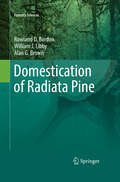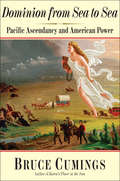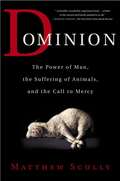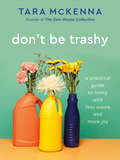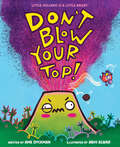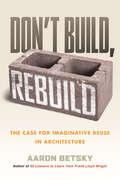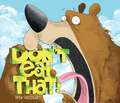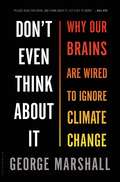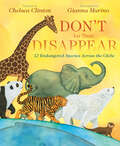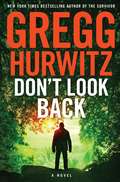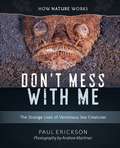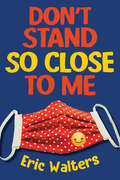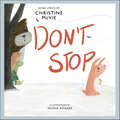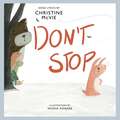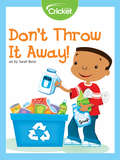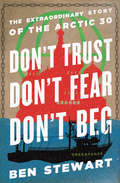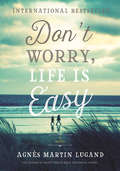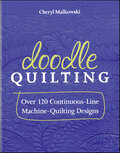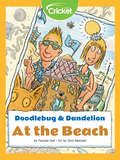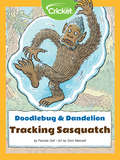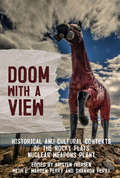- Table View
- List View
Domestication of Radiata Pine
by Alan Brown Rowland Burdon William LibbyIn nature, radiata pine is very localised and an obscure tree species despite the romantic character of much of its natural habitat. That obscure status and the lack of any reputation as a virgin timber slowed its due recognition as a commercial crop. Nevertheless, it has become a major plantation forest crop internationally. It has become the pre-eminent commercial forest species in New Zealand, Chile and Australia, with important plantings in some other countries. It consequently features prominently in the international trade in forest products, in addition to its importance in domestic markets of grower countries. Very fast growth, considerable site tolerances, ease of raising in nurseries and transplanting, and ease of processing and using its wood for a range of products and purposes, have made it the utility softwood of choice almost everywhere it can be grown satisfactorily. Abundant genetic variation and its amenability to other management inputs created special opportunities for its domestication. The story of its domestication forms a classic case history in the development of modern commercial forestry, with trailblazing in both genetic improvement and plantation management; this inevitably meant a learning process that provided instructive lessons, especially for tree breeders dealing with some other species. Paradoxically, the plantation monocultures have played and can continue to play an important role in protecting natural forests and other forms of biodiversity. Given the attractions of growing radiata pine, there were inevitably cases of overreach in planting it, with lessons to be learnt. Economic globalisation has meant globalisation of pests and disease organisms, and the scale on which radiata pine is grown has meant is has been the focus of various biotic alarms, none of which have proved catastrophic. Temptations, remain, however, to pay less than due attention to some aspects of risk management. The chapter structure of the book is based on historical periods, beginning long before any important human influences, and ending with a look into what the future might hold for the species and its role in human and ecological sustainability. Almost throughout, there has been complex interplay between the technical aspects, local social and economic factors, various types of institution, the enthusiasm and drive of some very influential individuals, and tides of economic ideology, threads that needed to be woven together to do the story justice.
Dominion from Sea to Sea: Pacific Ascendancy and American Power
by Bruce CumingsAmerica is the first world power to inhabit an immense land mass open at both ends to the world's two largest oceans--the Atlantic and the Pacific. This gives America a great competitive advantage often overlooked by Atlanticists, whose focus remains overwhelmingly fixed on America's relationship with Europe. Bruce Cumings challenges the Atlanticist perspective in this innovative new history, arguing that relations with Asia influenced our history greatly. Cumings chronicles how the movement westward, from the Middle West to the Pacific, has shaped America's industrial, technological, military, and global rise to power. He unites domestic and international history, international relations, and political economy to demonstrate how technological change and sharp economic growth have created a truly bicoastal national economy that has led the world for more than a century. Cumings emphasizes the importance of American encounters with Mexico, the Philippines, and the nations of East Asia. The result is a wonderfully integrative history that advances a strong argument for a dual approach to American history incorporating both Atlanticist and Pacificist perspectives.
Dominion: The Power of Man, the Suffering of Animals, and the Call to Mercy
by Matthew ScullyAs an eye opening, painful and infuriating, insightful and rewarding book, Dominion is a plea for human benevolence and mercy, a scathing attack on those who would dismiss animal activists as mere sentimentalists, and a demand for reform from the government down to the individual.
Don't Be Trashy: A Practical Guide to Living with Less Waste and More Joy
by Tara McKennaLearn how to dramatically reduce the waste you produce—and your stress levels—one sanity-saving step at a time in this accessible, practical guide from the creator of The Zero Waste Collective. &“You&’ll feel inspired by McKenna&’s thorough and accessible approach to understanding the why and how of reducing waste.&”—Julia Watkins, author of Simply Living Well Say goodbye to your bursting toiletries bag, fast fashion, and all the plastic crowding your pantry. It's time to build less trashy habits for a more sustainable and ethical life. With relatable stories, compassion, and a realistic perspective, Tara McKenna will show you how in this ultimate guide to going zero waste(ish). We're all trapped in a wasteful convenience-based cycle, but Don&’t Be Trashy offers an alternative: an approach to reducing waste that emphasizes progress over perfection. McKenna guides you month by month through a year of reducing consumption, covering:• Decluttering and turning off the flow of stuff into your home• Breaking up with fast fashion and developing a capsule wardrobe• Cutting off your supply of single-use plastic in your kitchen, cleaning supplies, and bathroom • Investing in home goods that'll last for decades without breaking the bank• And more! Ultimately, it's about changing your mindset to one of minimalism and conscious consumption—a mindset that&’s as good for your wallet and your well-being as it is for the planet. Don't Be Trashy will guide you to your best life—one with less waste and more joy!
Don't Blow Your Top!
by Ame DyckmanEverybody gets angry sometimes, even a little volcano. But with some rock-steady advice, Little Volcano finds a way to process their steamy emotions.Spend a day in paradise with Little Volcano and Big Volcano. Everything is beautiful and calm until an out-of-control bird drops a coconut on Little Volcano's crater. Will Little Volcano blow their top? Can Big Volcano help? Don't Blow Your Top! is a hysterical and explosive read-aloud story that will have kids of all ages erupting with laughter as Little Volcano and Big Volcano try to deal with their anger and go with the flow. The book features some tips for kids and volcanoes of all ages to help them navigate their fiery emotions and learn to be cool when things get a little out of control.
Don't Build, Rebuild: The Case for Imaginative Reuse in Architecture
by Aaron BetskyIn a time of climate crisis and housing shortages, a bold, visionary call to replace current wasteful construction practices with an architecture of reuseAs climate change has escalated into a crisis, the reuse of existing structures is the only way to even begin to preserve our wood, sand, silicon, and iron, let alone stop belching carbon monoxide into the air. Our housing crisis means that we need usable buildings now more than ever, but architect and critic Aaron Betsky shows that new construction—often seeking to maximize profits rather than resources, often soulless in its feel—is not the answer. Whenever possible, it is better to repair, recycle, renovate, and reuse—not only from an environmental perspective, but culturally and artistically as well.Architectural reuse is as old as civilization itself. In the streets of Europe, you can find fragments from the Roman Empire. More recently, marginalized communities from New York to Detroit—queer people looking for places to gather or cruise, punks looking to make loud music, artists and displaced people looking for space to work and live—have taken over industrial spaces created then abandoned by capitalism, forging a unique style in the process. Their methods—from urban mining to dumpster diving—now inform architects transforming old structures today.Betsky shows us contemporary imaginative reuse throughout the world: the Mexican housing authority transforming concrete slums into well-serviced apartments; the MassMOCA museum, built out of old textile mills; the squatted city of Christiana in Copenhagen, fashioned from an old army base; Project Heidelberg in Detroit. All point towards a new circular economy of reuse, built from the ashes of the capitalist economy of consumption.
Don't Eat That
by Drew ShenemanA perfect summer read-aloud from the author-illustrator who brought you, NOPE!Bear is hungry. Gertie wants to help. But finding the perfect snack is harder than it looks. Will Gertie and Bear silence Bear's tummy grumbles before hunger gets the best of them?Expressive characters and funny dialogue lead the way in this pitch-perfect story about patience and teamwork, by nationally-syndicated cartoonist Drew Sheneman.
Don't Eat the Cleaners!: Tiny Fish with a Big Job
by Susan StockdaleEven though they live underwater, ocean animals have to get clean, just like we do. But they get it done in a weird and wonderful way.Just like you have to take a bath and brush your teeth, fish also have basic hygiene practices they have to follow every day. But their approach to cleanliness doesn't just take place underwater—it involves a network of larger ocean animals washed by small fish and shrimp called cleaners at coral reef cleaning stations around the world.Cleaners remove pesky parasites from their customers in return for a tasty meal, serving up to 2000 customers a day. Sea turtles, manta rays, and even sharks line up for a scrubbing in the busy stations, just like at a car wash. Some customers return 100 times daily. And they must remember the important rule if they want a washing by the cleaning crew: DON&’T EAT THE CLEANERS!Readers will delight in this colorful exploration of the remarkable teamwork among coral reef residents. Back matter features images of all 30 animals and a fun matching game: can you find the animals in the book?In her latest nonfiction work, award-winning author-illustrator Susan Stockdale once again proves her talent in creating engaging and entertaining nature books for young readers.
Don't Even Think About It: Why Our Brains are Wired to Ignore Climate Change
by George MarshallMost of us recognize that climate change is real, and yet we do nothing to stop it. What is this psychological mechanism that allows us to know something is true but act as if it is not? George Marshall's search for the answers brings him face to face with Nobel Prize-winning psychologists and the activists of the Texas Tea Party; the world's leading climate scientists and the people who denounce them; liberal environmentalists and conservative evangelicals. What he discovered is that our values, assumptions, and prejudices can take on lives of their own, gaining authority as they are shared, dividing people in their wake. <P><P>With engaging stories and drawing on years of his own research, Marshall argues that the answers do not lie in the things that make us different and drive us apart, but rather in what we all share: how our human brains are wired-our evolutionary origins, our perceptions of threats, our cognitive blindspots, our love of storytelling, our fear of death, and our deepest instincts to defend our family and tribe. Once we understand what excites, threatens, and motivates us, we can rethink and reimagine climate change, for it is not an impossible problem. Rather, it is one we can halt if we can make it our common purpose and common ground. Silence and inaction are the most persuasive of narratives, so we need to change the story. <P><P>In the end, Don't Even Think About It is both about climate change and about the qualities that make us human and how we can grow as we deal with the greatest challenge we have ever faced.
Don't Let Them Disappear
by Chelsea ClintonFrom the author of the #1 New York Times bestseller She Persisted comes a beautiful book about the animals who share our planet--and what we can do to help them survive.Did you know that blue whales are the largest animals in the world? Or that sea otters wash their paws after every meal? The world is filled with millions of animal species, and all of them are unique and special. Many are on the path to extinction.In this book, Chelsea Clinton introduces young readers to a selection of endangered animals, sharing what makes them special, and also what threatens them. Taking readers through the course of a day, Don't Let Them Disappear talks about rhinos, tigers, whales, pandas and more, and provides helpful tips on what we all can do to help prevent these animals from disappearing from our world entirely.With warm and engaging art by Gianna Marino, this book is the perfect read for animal-lovers and anyone who cares about our planet.Praise for Don't Let Them Disappear:"A winning heads up for younger readers just becoming aware of the wider natural world." --Kirkus Reviews"An inviting . . . appeal to care for the planet and its most vulnerable creatures." --Publishers Weekly
Don't Look Back
by Gregg HurwitzEve Hardaway, newly single mother of one, is on a trip she's long dreamed of--a rafting and hiking tour through the jungles of Oaxaca, in southern Mexico. Eve wanders off the trail, coming upon a shack among the trees. There she spies a menacing man throwing machetes at a human-shaped target. Disturbed by the sight, Eve rushes quietly back to her group, taking care to avoid being seen. As she creeps along, she finds a broken digital camera, marked with the name Teresa Hamilton. Later that night, clicking through the camera's card, Eve discovers that Teresa Hamilton took a photo of that same menacing-looking man in the woods. Teresa Hamilton has since disappeared. Now the man in the woods is after whoever was snooping around his house. With a violent past and deadly mission, he will do anything to avoid being discovered. When a major storm wipes out the roads and all communication with the outside world, the tour group is trapped in the jungle with a brutal predator hell-bent on protecting a long-hidden secret. With her only resource her determination to live, Eve must fight a dangerous foe and survive against incredible odds--if she's to make it back home alive.
Don't Mess With Me: The Strange Lives Of Venomous Sea Creatures (How Nature Works #0)
by Paul Erickson Andrew MartinezThe role of venoms in nature … and in human medicine Why are toxins so advantageous to their possessors as to evolve over and over again? What is it about watery environments that favors so many venomous creatures? Marine biologist Paul Erickson explores these and other questions with astounding images from Andrew Martinez and other top underwater photographers. GREAT for teaching STEM Marine Biology Scorpions and brown recluse spiders are fine as far as they go, but if you want daily contact with venomous creatures, the ocean is the place to be. Blue-ringed octopi, stony corals, sea jellies, stonefish, lionfish, poison-fanged blennies, stingrays, cone snails, blind remipedes, fire urchins—you can choose your poison in the ocean. Venoms are often but not always defensive weapons. The banded sea krait, an aquatic snake, wriggles into undersea caves to prey on vicious moray eels, killing them with one of the world’s most deadly neurotoxins, which it injects through fangs that resemble hypodermic needles.
Don't Stand So Close to Me
by Eric WaltersThirteen-year-old Quinn and her friends can't believe their luck when spring break is extended an extra two weeks—even if it's because of some virus. But when the impact of the worldwide COVID-19 pandemic becomes apparent, everyone, not just the students, has to learn to adjust to their new reality. Quinn’s father is an ER doctor and has to self-isolate to protect his family from the virus. Isaac’s mother is the chief of police and now has to enforce new physical-distancing bylaws. Reese can’t visit her grandmother in her care home anymore. And their entire school has moved to online classes. Sacrifices have to be made to keep everyone safe, but there’s more to life than rules and scary news reports. In an effort to find some good in all this uncertainty, Quinn comes up with an idea that she hopes will bring the entire community together. Orca Book Publishers is pleased to offer Don't Stand So Close for Me in two accessible editions. The audiobook features alternate text descriptions of images, including the cover. The epub edition of this title is fully accessible.
Don't Stop (LyricPop)
by Christine McVieMcVie's classic song about keeping one's chin up and rolling with life's punches is beautifully adapted to an uplifting children's book.“Gorgeous . . . Christine McVie’s lyrics paired with woodland creatures in Don’t Stop is truly as wondrous as it sounds.” —Exclusive Magazine“Don’t stop thinking about tomorrowDon’t stop, it’ll soon be hereIt’ll be better than beforeYesterday’s gone, yesterday’s gone . . .”Don’t Stop is a beautifully illustrated picture book based on Christine McVie of Fleetwood Mac’s enduring anthem to optimism and patience. The song was one of the singles on Fleetwood Mac’s megahit album Rumours, which spent thirty-one weeks at number one on the Billboard charts and went on to sell over forty million copies worldwide.With lyrics by Christine McVie and illustrations by Nusha Ashjaee, this touching picture book imagines a rabbit willing her hibernating friends out of a long and dark winter and into joyous spring. Don’t Stop is a great opportunity for fans of Christine McVie and Fleetwood Mac to introduce their favorite band to their young children, and for parents looking to share a bright message in song.
Don't Stop: A Children's Picture Book (LyricPop #0)
by Christine McVieMcVie's classic song about keeping one's chin up and rolling with life's punches is beautifully adapted to an uplifting children's book. Don't stop thinking about tomorrow Don't stop, it'll soon be here It'll be better than before Yesterday's gone, yesterday's gone Don't Stop is a beautifully illustrated picture book based on Christine McVie of Fleetwood Mac's enduring anthem to optimism and patience. The song was one of the singles on Fleetwood Mac's megahit album Rumours, which spent thirty-one weeks at number one on the Billboard charts and went on to sell over forty million copies worldwide. With lyrics by Christine McVie and illustrations by Nusha Ashjaee, this touching picture book imagines a rabbit willing her hibernating friends out of a long and dark winter and into joyous spring. Don't Stop is a great opportunity for fans of Christine McVie and Fleetwood Mac to introduce their favorite band to their young children, and for parents looking to share a bright message in song. Debuting in 1977, this song is one of the most identifiable of that decade A classic rock radio staple A top-five single in the US, and one of the band's most enduring hits Written by band keyboardist and vocalist Christine McVie Sung as duet between Christine McVie and guitarist Lindsey Buckingham Appears on the Grammy-winning album Rumours, which as of 2019 is the RIAA-certified tenth all-time best-selling album in the US It was the theme song for Bill Clinton's 1992 presidential campaign "Christine McVie's lyrics paired with woodland creatures is the wholesome content we want in 2020." --Paste Magazine "With her naturally smoky low alto voice and a knack for writing simple, direct, and memorable songs about the joys and pitfalls of love, Christine McVie has had a long and productive music career." --AllMusic
Don't Throw It Away!
by Amy TaoReduce, recycle, and reuse. We can all help Earth, if we choose. In this poem, kids learn about the differences between recycling, compost, and hazardous waste.
Don't Trust, Don't Fear, Don't Beg: The Extraordinary Story of the Arctic 30
by Ben StewartThe true story of Greenpeace activists imprisoned in Russia—and the fight to free them: &“A gripping story of tremendous courage that reads like a thriller&” (Naomi Klein). &“The most important prison motto is hope for the better, but every moment, literally every moment, be prepared for the worst. Don&’t hope, don&’t fear, don&’t beg.&” —Roman Dolgov, one of the Arctic 30 With rising temperatures, a military arms race, and a multi-national rush to exploit resources at any cost, the Arctic is now the stage on which our future will be decided. As the ice melts, Vladimir Putin orders Russia&’s oil rigs to move further north. But one early September morning in 2013, thirty men and women from eighteen countries—the crew of Greenpeace&’s Arctic Sunrise—decided to draw a line in the ice and protest Arctic drilling. Thrown together by a common cause, they are determined to stop Putin and the oligarchs. But their protest is met with brutal force as Russian commandos seize the Arctic Sunrise. Held under armed guard by masked men, they are charged with piracy and face fifteen years in Russia&’s nightmarish prison system. Journalist and activist Ben Stewart spearheaded the campaign to release the Arctic 30. Now he tells their astonishing story—a tale of passion, courage, brutality, and survival. With wit, verve, and candor, Stewart chronicles the extraordinary friendships the activists made with their often murderous cellmates, their battle to outwit the prison guards, and the struggle to stay true to the cause that brought them there. &“With its colorful dialogue, moral dilemmas, and scenes of physical danger, Stewart&’s book would make a great movie . . . the prison life the book reveals is eye-opening, and Stewart describes it with great verve.&” —Foreign Affairs
Don't Worry, Life Is Easy
by Agnès Martin-LugandThe sequel to Happy People Read and Drink Coffee. Diane needs to start over again. After returning from Ireland and turning the page on her stormy relationship with Edward, the brooding Irish photographer, she is determined to rebuild her life in Paris with help from her best friend Félix. She focuses solely on getting her literary café back on track-until she meets Olivier. He is kind and thoughtful, and she may have a future with him...until she stumbles across her former love at a photography exhibit. What is Edward doing in Paris? Why didn't he reach out? Faced with a hail of questions, her old flame remains cold and unresponsive. Apparently, he, too, has moved on. In order to put the past behind her, Diane must go back over her tracks. Ireland saved her before. Can she get answers there and find peace again?
Donald and the Fish That Walked
by Edward Raphael RicciutiOriginally brought to Florida as an aquarium pet, the walking catfish soon spread throughout southern Florida threatening the ecological balance.
Doodle Quilting: Over 120 Continuous-Line Machine-Quilting Designs
by Cheryl MalkowskiLearn to draw...with your sewing machine! In this beginner's guide to free-motion, continuous-line quilting designs, the focus is on selecting the right forms and lines that get you where you need to go...because sometimes the hardest part is figuring out where to quilt next! You'll gain confidence in your innate artistic ability to draw basic shapes, then you'll learn how to put them together into over a hundred different all-over quilting designs. • See how easy it can be to create interesting quilting designs by mastering your doodling skills • From squiggles and swirls to flowers and feathers, learn which shapes are best for confined spaces and which work better traveling across your quilt • Includes drawing exercises and tips for transferring your designs from paper to fabric
Doodlebug & Dandelion: At the Beach
by Pamela DellDoodlebug and Dandelion are on a beach vacation! They want to build a sand castle, but they can’t agree on what to build. He wants a Viking ship, while she wants a Gothic mansion. What will they pick?
Doodlebug & Dandelion: Tracking Sasquatch
by Pamela DellThe Pinkley family is going camping! Doodlebug, Dandelion, and their friends search for the elusive Sasquatch. Together, they learn about the legend of Bigfoot and hope they can find him!
Doom with a View: Historical and Cultural Contexts of the Rocky Flats Nuclear Weapons Plant
by Kristen IversenTucked up against the Rocky Mountains, just west of Denver, sits the remnants of one of the most notorious nuclear weapons sites in North America: Rocky Flats. With a history of environmental catastrophes, political neglect, and community-wide health crises, this site represents both one of the darkest and most controversial chapters in our nation's history, and also a conundrum on repurposing lands once considered lost. As the crush of encroaching residential areas close in on this site and the generation of Rocky Flats workers passes on, the memory of Rocky Flats is receding from the public mind; yet the need to responsibly manage the site, and understand the consequences of forty years of plutonium production and contamination, must be a part of every decision for the land's future.
Doppelganger: A Trip into the Mirror World
by Naomi Klein#1 NATIONAL BESTELLERShortlisted for the 2024 Women's Prize for Non-Fiction Shortlisted for the 2024 Writers&’ PrizeFinalist for the 2024 National Book Critics Circle Award for CriticismA New York Times Notable Book of 2023Vulture&’s #1 Book of 2023A Guardian Best Ideas Book of 2023Named a Best Book of the Year by The Globe and Mail • TIME • Esquire • Slate • Harpers&’ Bazaar • The Times • The New Republic • Toronto Star • CBC • The Boston Globe • Electric Lit What if you woke up one morning and found you'd acquired another self—a double who was almost you and yet not you at all? What if that double shared many of your preoccupations but, in a twisted, upside-down way, furthered the very causes you'd devoted your life to fighting against?Not long ago, Naomi Klein had just such an experience—she was confronted with a doppelganger whose views she found abhorrent but whose name and public persona were similar enough to her own that many people confused her for the other. For a vertiginous moment, she lost her bearings. And then she got interested, in a reality that seems to be warping and doubling like a digital hall of mirrors. It&’s happening in our politics as New Age wellness entrepreneurs turned anti-vaxxers find common cause with fire-breathing far right propagandists (all in the name of protecting &“the children&”). It&’s happening in our culture as AI gobbles up music, paintings, fiction and everything in between and spits out imitations that threaten to overtake the originals. And it&’s happening to many of us as individuals as we create digital doubles of ourselves, filtered and curated just so for all the other duplicates to see. An award-winning journalist, bestselling author, public intellectual and activist, Naomi Klein writes books that orient us in our time. She has offered essential accounts of what branding, austerity, and climate profiteering have done to our societies and souls. Now, as liberal democracies teeter on the edge, Klein takes aim at absurdist authoritarianism, using a keen sense of the ridiculous to face the doubles that haunt us. Part tragicomic memoir, part chilling reportage and cobweb-clearing analysis, Doppelganger invites readers on a wild ride, smashing through the mirror world, charting a path beyond despair towards true solidarity.
Doppelganger: A Trip into the Mirror World
by Naomi Klein#1 NATIONAL BESTELLER • Winner of the 2024 Women's Prize for Non-Fiction • Winner of the 2024 Vine National Canadian Jewish Book Award for Non-Fiction • Finalist for the 2024 National Book Critics Circle Award for Criticism • Shortlisted for the 2024 Hubert Evans Non-Fiction Prize • A New York Times Notable Book of 2023 • Vulture&’s #1 Book of 2023 • A Guardian Best Ideas Book of 2023What if you woke up one morning and found you'd acquired another self—a double who was almost you and yet not you at all? What if that double shared many of your preoccupations but, in a twisted, upside-down way, furthered the very causes you'd devoted your life to fighting against?Not long ago, Naomi Klein had just such an experience—she was confronted with a doppelganger whose views she found abhorrent but whose name and public persona were similar enough to her own that many people confused her for the other. For a vertiginous moment, she lost her bearings. And then she got interested, in a reality that seems to be warping and doubling like a digital hall of mirrors. It&’s happening in our politics as New Age wellness entrepreneurs turned anti-vaxxers find common cause with fire-breathing far right propagandists (all in the name of protecting &“the children&”). It&’s happening in our culture as AI gobbles up music, paintings, fiction and everything in between and spits out imitations that threaten to overtake the originals. And it&’s happening to many of us as individuals as we create digital doubles of ourselves, filtered and curated just so for all the other duplicates to see. An award-winning journalist, bestselling author, public intellectual and activist, Naomi Klein writes books that orient us in our time. She has offered essential accounts of what branding, austerity, and climate profiteering have done to our societies and souls. Now, as liberal democracies teeter on the edge, Klein takes aim at absurdist authoritarianism, using a keen sense of the ridiculous to face the doubles that haunt us. Part tragicomic memoir, part chilling reportage and cobweb-clearing analysis, Doppelganger invites readers on a wild ride, smashing through the mirror world, charting a path beyond despair towards true solidarity.
